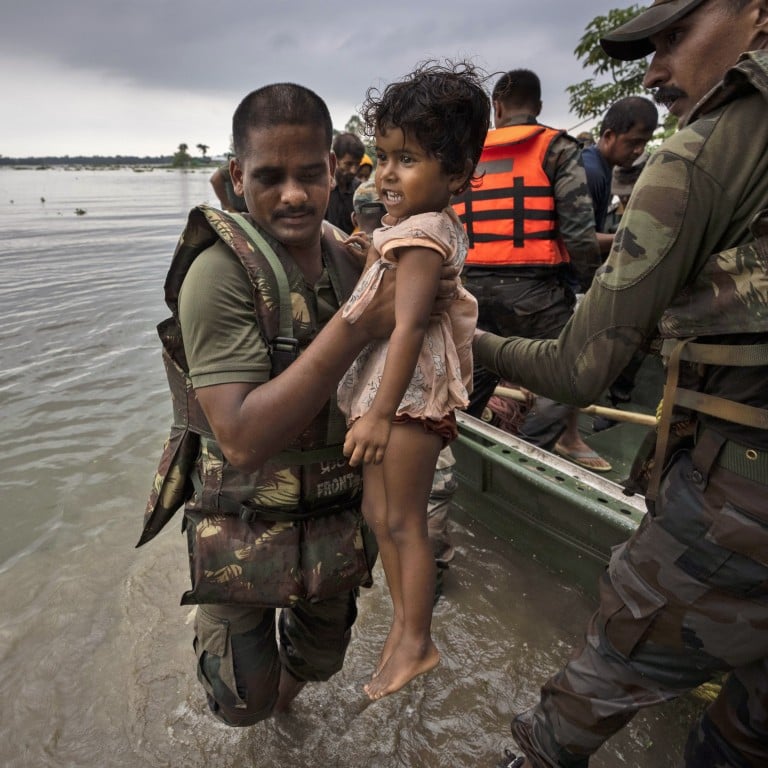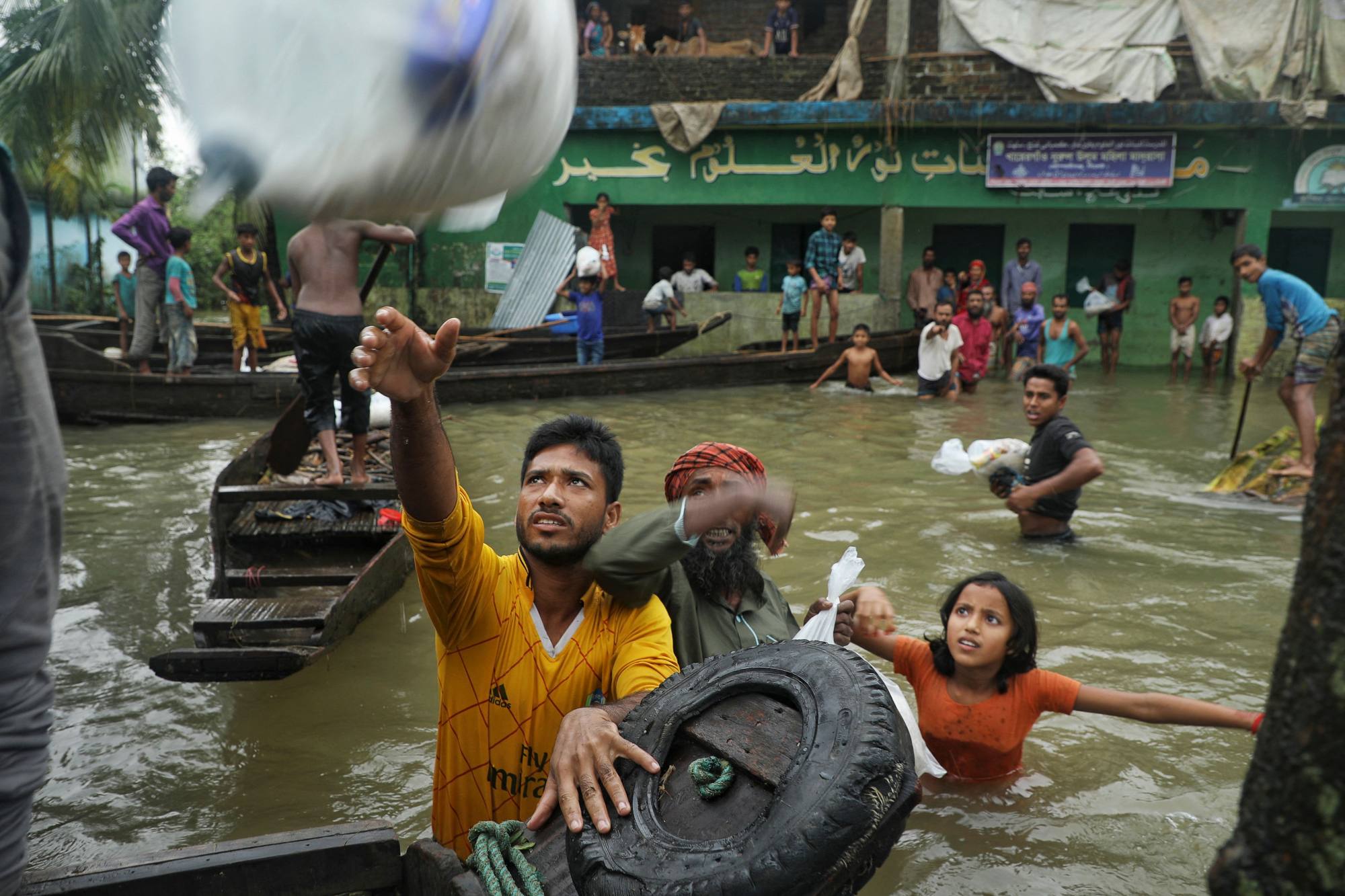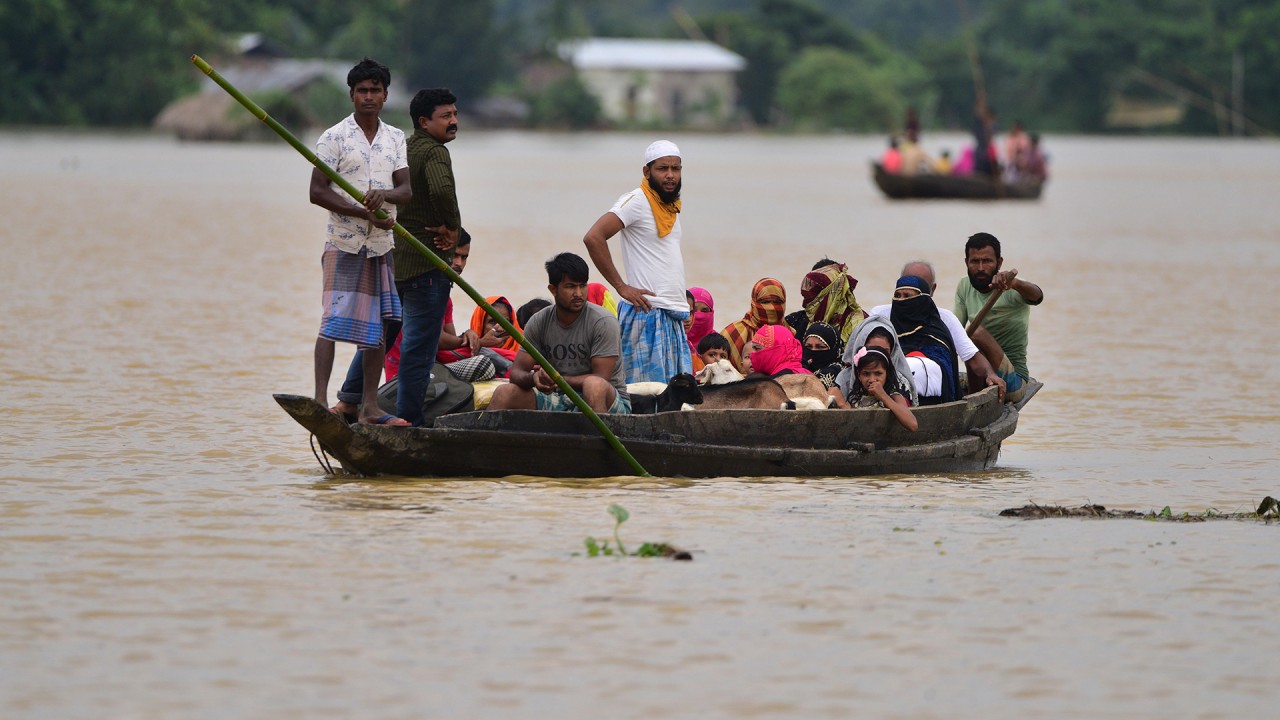
Bangladesh, India scramble to help 9 million people hit by ‘worst floods in 122 years’
- Hundreds of thousands of people have been moved to shelters, but at least 9 million residents are still stranded near their inundated homes
- More than 970mm (38 inches) of rain fell on India’s Mawsynram and Cherrapunji on Sunday, worsening the flooding downstream in Bangladesh’s Sylhet division
Monsoon rains in low-lying Bangladesh have triggered catastrophic flooding in the northeastern Sylhet administrative division, leaving one-quarter of its 15 million population stranded amid fast-rising waters and swollen rivers.
“The flooding is the worst in 122 years in the Sylhet region,” said Atiqul Haque, Director General of Bangladesh’s Department of Disaster Management.
The situation in Sylhet has been worsened by waters cascading down from the surrounding hills of India’s Meghalaya state, including some of world’s wettest areas like Mawsynram and Cherrapunji that each received more than 970mm (38 inches) of rain on Sunday, according to government data.
Around 300,000 people have been moved to shelters in Sylhet but more than 4 million people are stranded near their inundated homes, compounding the challenges for authorities to provide aid, including drinking water and medical supplies.
“The situation is still alarming,” Mohammad Mosharraf Hossain, Sylhet division’s chief administrator, said by phone. “We are intensifying our efforts providing relief materials. At the moment, the main challenge is to reach everyone and ensuring availability of drinking water.”
US, India, China vie to help as South Asian nations grapple with economic woes
Khalilur Rahman, a resident of Sylhet’s Sunamganj district, said floodwaters had swamped the ground floor of his two-storey house and locals were using boats to move around the area.
“I have never seen such floods in my life,” Rahman, 43, said by phone, adding that there had been no electricity since heavy rains began on Thursday night. “Dry food is running out, there is no drinking water.”
In the neighbouring Indian state of Assam, where at least 26 people have been killed since heavy rains began around a fortnight ago, floodwaters have started receding, authorities said.
But 4.5 million people have been forced from their homes, with around 220,000 staying in makeshift shelters run by the government. Over a million hectares of farmland has been flooded.

“The overall flood situation is improving,” Assam’s Water Resources Minister Pijush Hazarika said.
“Now the biggest challenge is to reach out to the displaced people and provide them with relief materials.”
The South Asian neighbours have experienced increasing extreme weather in recent years, causing large-scale damage, and environmentalists warn that climate change could lead to more disasters, especially in densely populated Bangladesh.


